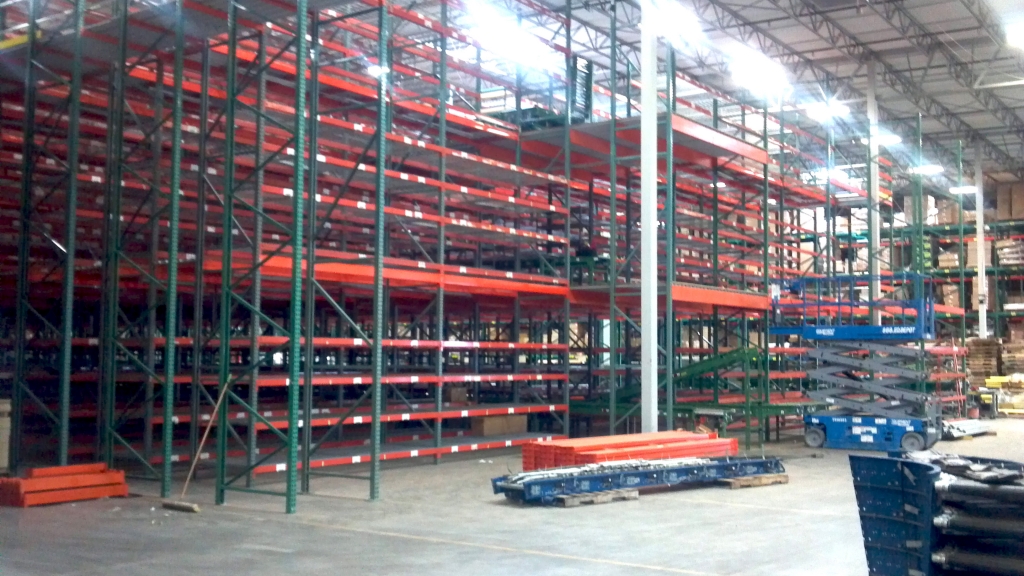Ask any warehouse manager and they’re likely to tell you that pallet racks are the lifeblood or literal backbone of your warehouse operations. Integral to acceptable material handling times, easy product accessibility, and efficient order fulfillment, pallet rack systems are very much responsible for keeping your organization profitable.
So when they tell you it’s time to invest in a “new” system, listen up.
As you finalize the budget this fiscal year, it may be tempting to spend less for an economical used pallet rack system. Before you do, consider your geographic region and long-term plans, as well as the potential for additional costs and repairs down the line.
Here’s a short rundown to help you suss out whether a new or used pallet rack system is best for your warehouse.
Pros of Used
For smaller operations that require only basic components such as upright frames and beams for vertical storage, you can often get a steal on these essential pieces and parts. Keep an eye out for warehouse closures or operations looking to downsize. Often times, this is the best way to get deeply discounted used storage racks.
Alternately, a used pallet rack can also be useful as an inexpensive temporary stopgap if your warehouse operations are planning a relocation or expansion of their own.
When buying used, check to make sure its condition hasn’t been compromised and ask questions about its age, if it’s sustained any trauma and in what region of the country it was used. (As we’ll see later, some geographic hazards like seismic activity can influence your purchasing decisions.)
Cons of Used
It’s important to remember that when buying used pallet rack, you can never be fully guaranteed of its long-term durability. Often you’ll need to build a little extra cushion into your budget for ongoing maintenance costs or unexpected service claims to repair any hidden damage to the rack.
 Used pallet rack systems can also cause you to be inadvertently out of compliance with some steel racking design specifications. You’ll also need to take a look at your local building and fire codes to make sure they meet all current ratings including those that may reference lead-based or toxic paints. If you find yourself out of compliance, it can be difficult to get up to code if the manufacturer has gone out of business, or the product line has since been discontinued.
Used pallet rack systems can also cause you to be inadvertently out of compliance with some steel racking design specifications. You’ll also need to take a look at your local building and fire codes to make sure they meet all current ratings including those that may reference lead-based or toxic paints. If you find yourself out of compliance, it can be difficult to get up to code if the manufacturer has gone out of business, or the product line has since been discontinued.
Additionally, increased seismic activity means stricter requirements, and without the help of a consultant, it can be difficult to ensure that your rack system is permit-able. Unfortunately, the testing and consulting fees associated can quickly eat away at any initial savings associated with buying used.
New Pallet Rack Systems
With newer warehouse racks, you’re pretty much guaranteed to be dealing with lead-free, non-toxic paint substances that are chip resistant and less likely to show sustained damage. Their premium steel make up registers 50% stronger than older commercial steel yielding a 50,000 psi range.
New pallet rack systems are also the way to go if your system is on the complex side and requires a great deal of customization.
For instance, if an expansion of your current space is anticipated, the add-ons and extensions needed to fit the space, improved processes or specialty applications are best accomplished through newer systems.
In short, the more complex and long-term your warehouse fulfillment needs, the more sense it makes to spend for a new pallet rack. However, if you’re looking for a temporary, straightforward solution older racks may yield significant cost savings.
